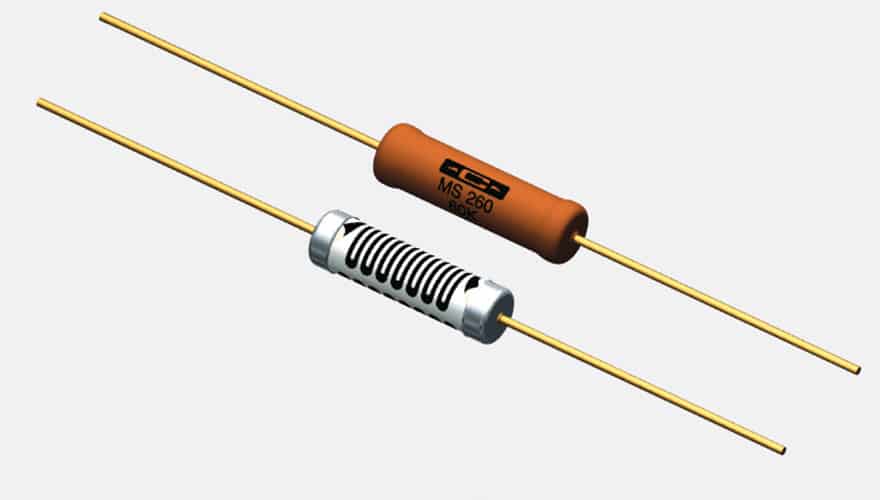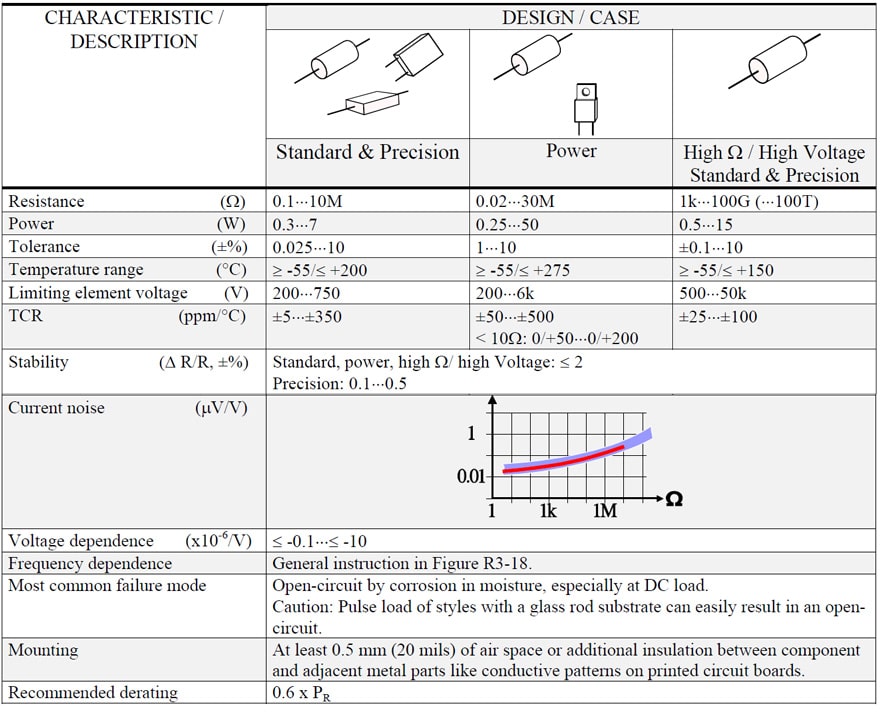Metal Oxide METOX Resistors
R 3.6 METAL OXIDE (“METOX”)

The metal oxide resistors have increasingly been replaced by metal film resistors. But, they still have a market, above all in the high ohmic-high voltage range. Precision designs exist in all resistance ranges.
There are different ways of producing resistive metal oxide films. If we heat ceramic rods in a vapor of stannic chloride we get a coating of stannic oxide with good resistive characteristics. The thickness is approximately 1μm (0.04 mils). If we instead use glass that in a hot state is extruded in a stannic chloride vapor, it will result in a film of stannic oxide that is integrated with the glass to form an environment resistive resistance film. It will withstand several hundred per cent overload with good stability. On the other hand these resistors are extremely sensitive to stronger power pulses, also of short duration. Another way to produce metal oxide films is to first apply a metal film on the rods and then oxidize the film in an oxygen gas.
Normally the rods are spiraled in a conventional way. The lead pattern, however, can be formed in an inductance-limiting serpentine pattern as shown in Figure R3-7 from the manufacturer Caddock Electronics, Inc.

The metal oxide film has excellent noise characteristics, next to metal films the best. Unlike other films it does not run the risk of being oxidized at higher temperatures.
It already is oxidized. Thus, in certain power resistors Hot Spot temperatures up to 275 °C are permitted. But the user needs to check with the manufacturer’s data sheet about how much the chosen type can stand. It varies. Sometimes the power types are supplied with cooling plates integrated with the housing.
Certain types of metal oxide films also are suited for high voltage or high ohmic types, the latter in values up to at least 100 GΩ.
Table R3-3. METAL OXIDE (“Metox”) RESISTORS

